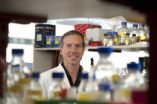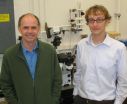(Press-News.org) OTTAWA – March 6, 2011 – Insight into the complex biological mechanisms that cause heart disease has taken a major step forward with the discovery of 13 new genes that increase the risk of coronary artery disease (CAD). The influence of the majority of the new genes is independent of other established risk factors, suggesting new, unsuspected causes of CAD. The discovery more than doubles the number of genes known to affect the progression of heart disease.
The research also verified the association of 10 previously identified genes to the population at large, meaning their influence is not confined to a specific population. Of the 23 genes discovered or confirmed, only 6 could be linked to known risk factors such as cholesterol and high blood pressure, underscoring the direct and indirect role that genes play in influencing the course and evolution of heart disease.
"This is a landmark result because we have identified so many genes and most operate using completely unknown mechanisms to us right now," said Dr. Robert Roberts, President and CEO, University of Ottawa Heart Institute. "It has opened up significant new avenues for new therapies and underlines the complexities of heart disease."
These discoveries were published online today in Nature Genetics by one of the world's largest consortiums examining the genetic basis of heart disease. More than 100 research organizations took part in the study, including such internationally-acclaimed centres as the University of Lubeck (Germany), Stanford University, Harvard Medical School, University of Iceland, Johns Hopkins University, University of Leeds (UK), Wellcome Trust Sanger Institute, the University of Ottawa Heart Institute and others.
The study is also one of the world's largest. Called CARDIoGRAM (Coronary Artery Disease Genome-wide Replication and Meta-Analysis), researchers evaluated the genetic samples of more than 140,000 people of European descent, of which one third exhibited heart disease and the remainder (the control group) did not. Data from genetic research centres in Europe, the United Kingdom, the United States and the Heart Institute were combined to provide the massive sample size, which is essential to ferret out subtle genetic indicators.
"The consortium examined more than 10 times the number of samples than the largest study ever published, so we magnified the power to detect small genetic variations," said Dr. Roberts. "Now our job is to understand how these genes work, develop a new group of drugs to target them and identify people who will benefit most to reduce their risk of heart attack and other cardiac events."
"Our main aim of this extremely large study is to locate and examine new disease mechanisms and improve our means of preventing cardiovascular disease," said Dr. Thomas Quertermous, Professor of Cardiovascular Medicine, Stanford University, which participated in the research.
The Heart Institute's contributions to the consortium were led by the Institute's Ruddy Canadian Cardiovascular Genetics Centre. The Ruddy Centre is the only one of its type in Canada and only one of a handful of cardiovascular genetics research centres worldwide. The Ruddy Centre's scientific team included the director and principal investigator, Dr. Roberts, laboratory director Alexandre Stewart, PhD, biostatistician George A. Wells, and Dr. Ruth McPherson, an endocrinologist and molecular biologist.
The CARDIoGRAM study is the latest significant progress to emerge from the Heart Institute. The Institute previously identified gene 9p21 which was the first genetic risk factor recognized for heart disease and the first major new cardiovascular risk factor since the discovery of cholesterol. The Institute has also located a variety of other genes influencing diseases such as atrial fibrillation and biological processes such as obesity.
Research has shown that up to 40% of heart disease can be prevented by modifying cholesterol, high blood pressure, smoking and other lifestyle causes. At the same time, it is known that about 50% of the risk of heart disease is due to genetic factors. Comprehensive prevention programs are needed that not only deal with lifestyle issues but also address the genetic aspects of heart disease. When this occurs, it is believed that heart disease will be dramatically reduced or possibly eliminated within 50 years.
About UOHI
The University of Ottawa Heart Institute is Canada's largest and foremost cardiovascular health centre dedicated to understanding, treating and preventing heart disease. We deliver high-tech care with a personal touch, shape the way cardiovascular medicine is practiced, and revolutionize cardiac treatment and understanding. We build knowledge through research and translate discoveries into advanced care. We serve the local, national and international community, and are pioneering a new era in heart health. For more information, visit www.ottawaheart.ca
Editor: For more information on CARDIoGRAM, please visit http://www.nature.com/genetics/index.html
Landmark study links 13 new genes to heart disease
2011-03-07
ELSE PRESS RELEASES FROM THIS DATE:
Newly identified cell population key to immune response
2011-03-07
Scientists from the Walter and Eliza Hall Institute have identified the key immune cell population responsible for regulating the body's immune response.
The finding could have wide-ranging repercussions for the treatment of autoimmune diseases, organ transplantation and cancer, and change how the efficacy of newly developed drugs is measured.
The discovery was made by Dr Erika Cretney, Dr Axel Kallies and Dr Stephen Nutt from the institute's Molecular Immunology division. It centred on a population of immune cells called regulatory T cells.
Regulatory T cells (T-regs) ...
Japanese scientists use alcoholic drinks to induce superconductivity
2011-03-07
Japanese researchers have been immersing iron-based compounds in hot alcoholic beverages such as red wine, sake and shochu to induce superconductivity.
Scientists from the National Institute for Materials Science, Japan, found that immersing pellets of an iron-based compound in heated alcoholic beverages for 24 hours greatly increase their superconducting ability.
Iron-based compounds usually become superconductive after being exposed to air. This process however can take up to several months. This study demonstrated that superconductivity can be induced in just one ...
Re-formulation of microbicidal lubricants will help protect from HIV
2011-03-07
Microbicides can be used to protect against HIV, and other sexually transmitted diseases, either on their own or with the added protection of a condom. New research published by BioMed Central's open access journal AIDS Research and Therapy has investigated the use of lubricants, originally designed for vaginal application, and has developed and tested new, rectal specific, formulations.
Unprotected sex is one of the major ways that HIV spreads through the population. However most research has focused on the production of vaginal microbicides which, due to differences ...
International collaborative identifies 13 new heart-disease-associated gene sites
2011-03-07
An international research collaboration has identified 13 new gene sites associated with the risk of coronary artery disease and validated 10 sites found in previous studies. Several of the novel sites discovered in the study, which is being published online in Nature Genetics, do not appear to relate to known risk factors, suggesting previously unsuspected mechanisms for cardiovascular disease.
"We now have identifed 23 specific genetic 'letters' that appear to confer risk for myocardial infarction and other aspects of coronary artery disease," says Sekar Kathiresan, ...
Cardiac catheter that can do it all
2011-03-07
In an improvement over open-heart surgery, cardiologists now use catheters to eliminate damaged heart tissue in certain patients, such as those with arrhythmias. But this, too, can be a long and painful procedure as many catheters, with different functions, need to be inserted sequentially.
Now an interdisciplinary team including researchers from Northwestern University has developed one catheter that can do it all. This tool for cardiac ablation therapy has all necessary medical devices printed on a standard balloon catheter: a device for eliminating damaged tissue using ...
Scripps Research scientists develop new test for 'pluripotent' stem cells
2011-03-07
LA JOLLA, CA – "Pluripotent" stem cells—which have the potential to mature into almost any cell in the body—are being widely studied for their role in treating a vast array of human diseases and for generating cells and tissues for transplantation. Now, a team of Scripps Research Institute scientists has created a quality control diagnostic test that will make it much easier for researchers to determine whether their cell lines are normal pluripotent cells.
The study was published in an online version of Nature Methods on March 6, 2011.
"Many scientists are unhappy ...
New instrument keeps an 'eye' on nanoparticles
2011-03-07
(Santa Barbara, Calif.) –– Precision measurement in the world of nanoparticles has now become a possibility, thanks to scientists at UC Santa Barbara.
The UCSB research team has developed a new instrument capable of detecting individual nanoparticles with diameters as small as a few tens of nanometers. The study will be published on line this week by Nature Nanotechnology, and appear in the April print issue of the journal.
"This device opens up a wide range of potential applications in nanoparticle analysis," said Jean-Luc Fraikin, the lead author on the study. ...
Sleepy connected Americans
2011-03-07
About two-thirds of baby boomers (67%) and generation X'ers (63%) and half of generation Z'ers (50%) and generation Y'ers (49%) watch television every night or almost every night within the hour before going to sleep.
"Artificial light exposure between dusk and the time we go to bed at night suppresses release of the sleep-promoting hormone melatonin, enhances alertness and shifts circadian rhythms to a later hour—making it more difficult to fall asleep," says Charles Czeisler, PhD, MD, Harvard Medical School and Brigham and Women's Hospital. "This study reveals that ...
'Fat Tuesday' is 'Phat Newsday' at BrianGeary.com
2011-03-07
BrianGeary.com will celebrate 'Fat Tuesday' with a 'Phat Newsday' on March 8th, 2011. The tradition of Mardi Gras will be celebrated by allowing clients to fatten their wallets with a 50% savings on news releases. Long-time and first-time clients are invited to take advantage of this savings before it is swept away at midnight (Pacific Standard Time).
"It's easy to get so caught up in Carnival," explains spokesman Brian Geary, "that businesses postpone their news announcements until the festivities are over." This often contributes to an anemic pipeline and subsequent ...
Yara Annechiarico of At Home with Yara Realty
2011-03-07
For those who are asking for my housing market predictions want me to reassure them that their homes will soon be worth again what they were worth in recent past years.
Unfortunately, when it comes to making housing market predictions, what I'm hearing from the National Association of Realtor's is that there are no easy answers Short sales & Loan modifications are still a painful process; Foreclosures are going to continue at these levels for awhile & Unemployment level are still on an average high.
Over all this is still the best time to buy if you're able to considering ...

